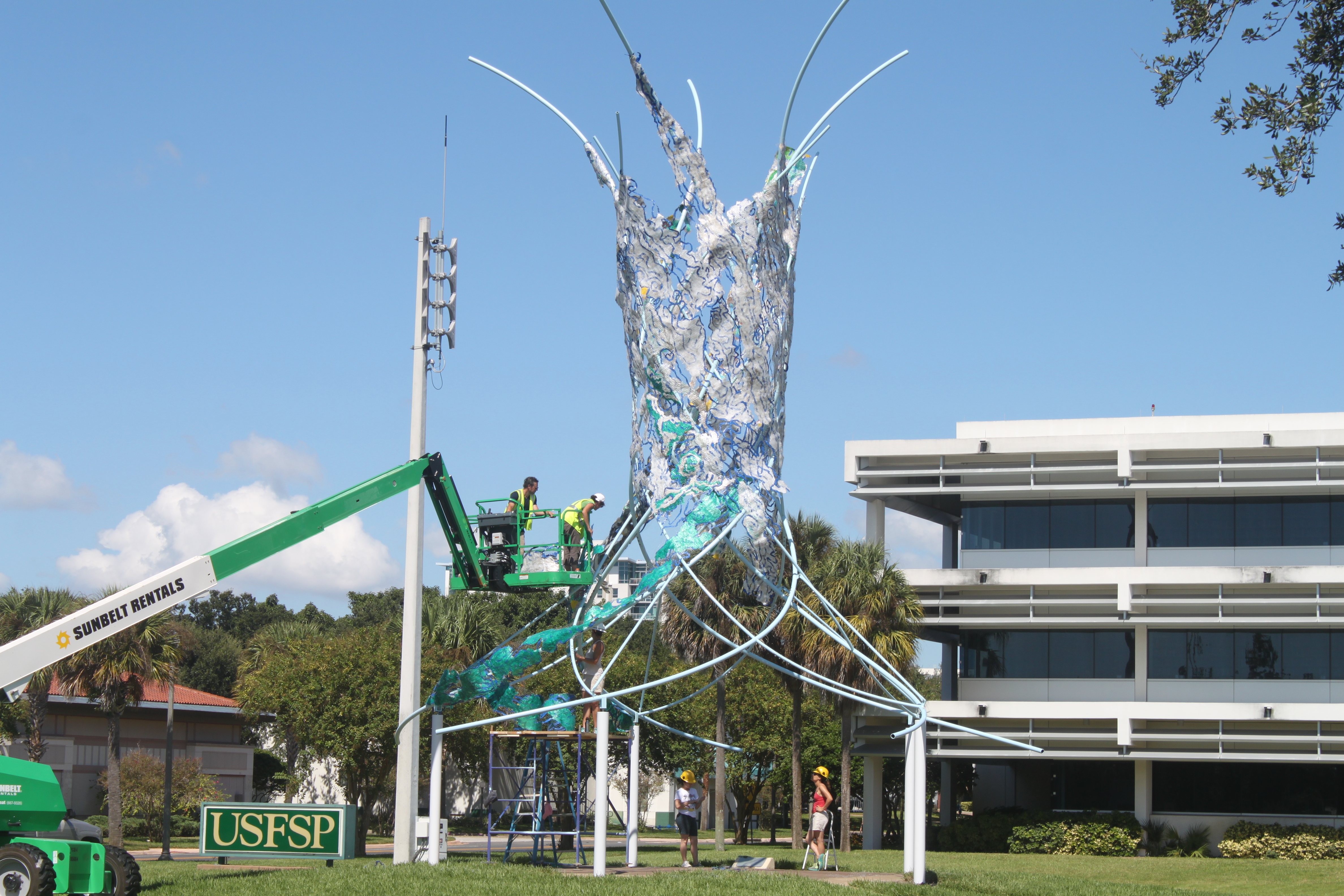
A 40-foot-wide sculpture, rising 30 feet into the air, was constructed last week at Poynter Park, located off Third Street S. The sculpture will be officially debuted at the Third Annual St. Petersburg Science Festival, which takes place from Oct. 17-18.
The created sculpture represents an ocean gyre, a vortex that is created by wind and collects plastic marine debris in its slow-spinning center. Debris reclaimed from the coast of Tampa Bay and other recycled materials were used to create the body of the gyre. Viewers are invited to walk under the raised sculpture for a surreal perspective.
The purpose of the giant structure is to make the community aware of the harms of marine debris and to help prevent littering, on both a civic and personal level, according to project coordinator CJ Reynolds.
The USF St. Petersburg College of Marine Science proposed a grant to the National Oceanic and Atmospheric Administration Marine Debris Prevention Program for the construction of this large-scale piece of public art. The $85,000 grant from NOAA was approved Dec. 2013.
The grant from NOAA was matched in full by in-kind and financial partners, including Georgia State University Welch Foundation, the GSU Center for Collaborative and International Arts and USF College of Marine Science.
Reynolds said the unique difference in this grant is its focus, which will be on-site and community specific activities and behaviors. Instead of just telling people not to litter, the projects will provide knowledge and helpful tips on how to prevent people from improperly disposing of trash.
“My hope is that this is the kickoff and that we will engage in further activities down the road,” Reynolds said.
Artists Dena Light, Amandine Drouet, and Mike Wsol from Embodied Energy Studio in Atlanta, Ga. are the creators of the Current Collections sculpture. They began working on the design in March and worked alongside Cane Construction during the actual building process. It took about four days to construct the piece of art at Poynter Park.
During the summer, more than 3,000 adults and children helped create the five plastic panels featured on the gyre at workshops hosted by Atlanta and St. Petersburg museums, such as the Salvador Dali Museum and the St. Petersburg Museum of Fine Arts.
Materials for the panels were brought in from a number of sources, including Keep Pinellas Beautiful, who brought in 2.7 tons of trash from their Great American Cleanup in March.
Reynolds acknowledges how important cleanups are for the environment, but said getting to the source of the problem # the people # can have a huge impact.
“We want to take a more preventive approach, so there is less need for cleanups,” Reynolds said.
Keep America Beautiful reported in a 2009 litter research study that people, particularly younger generations, are the main source of litter, and the more litter there is in a community, the more likely people are to add to it.
The year-long NOAA funded program is part of the Clean Community-Clean Coast led by the USF College of Marine Science. Members will be working with neighborhood associations and educators in Pinellas and Atlanta to help create new solutions to prevent littering, work on current problems, and continue to build awareness on the importance of proper recycling.
The Current Collections sculpture will be on campus until March 2015. It will then be relocated to Georgia State University for Earth Day before coming back to St. Petersburg in time for next year’s science festival.



